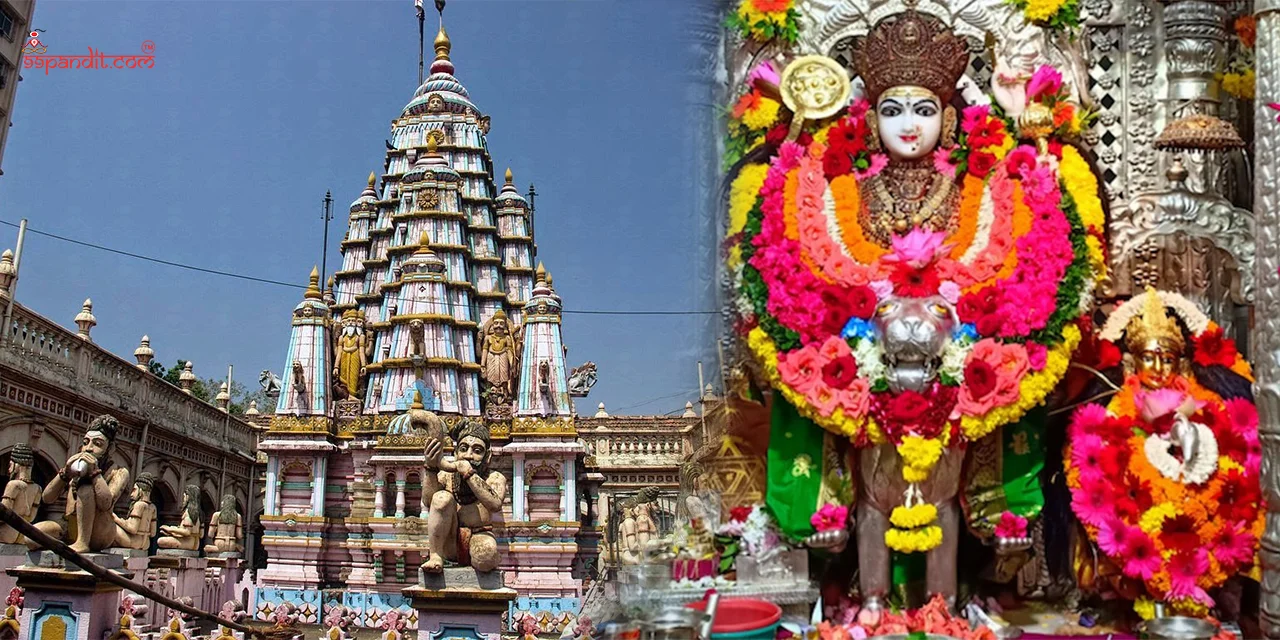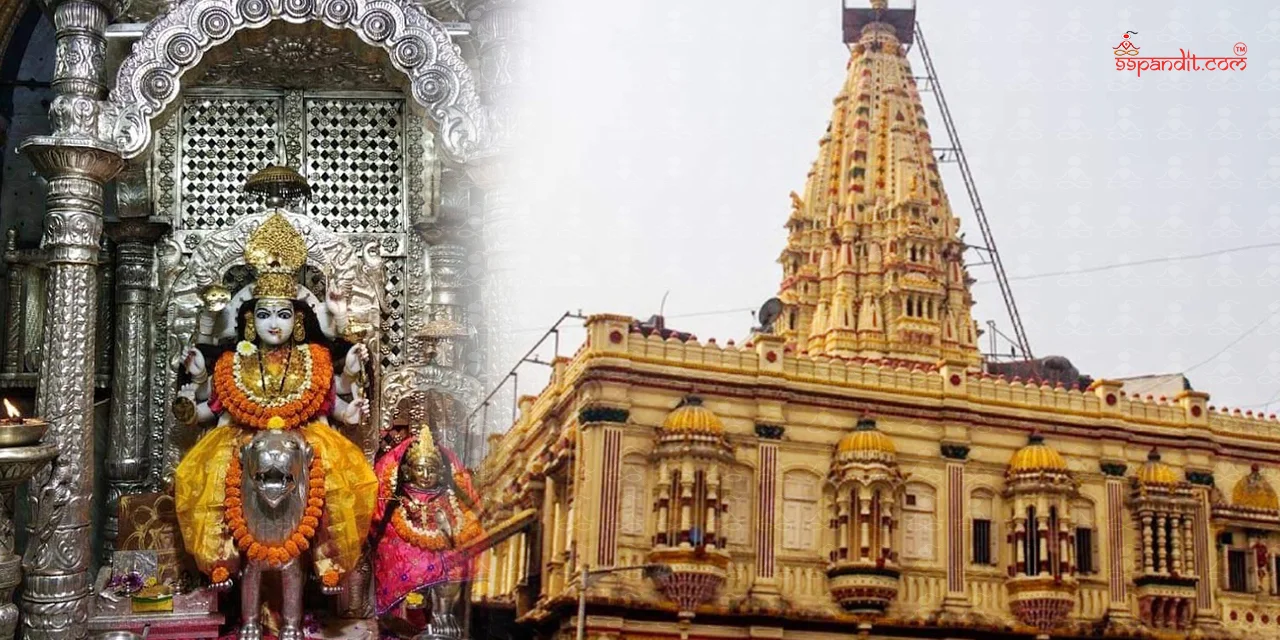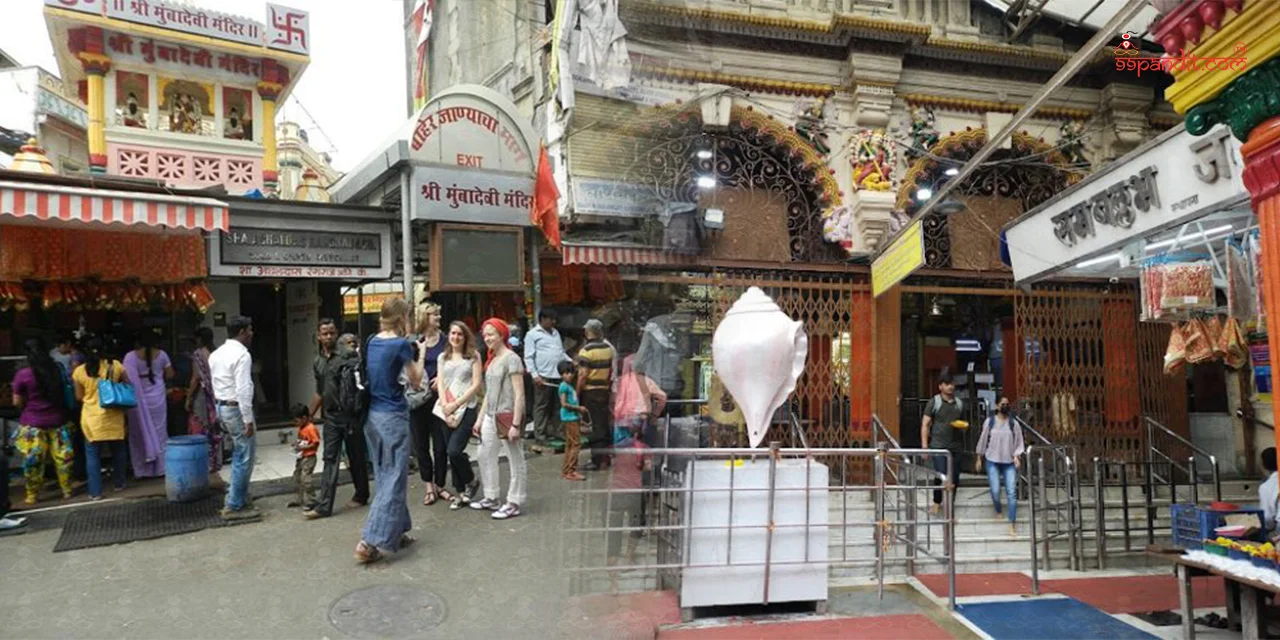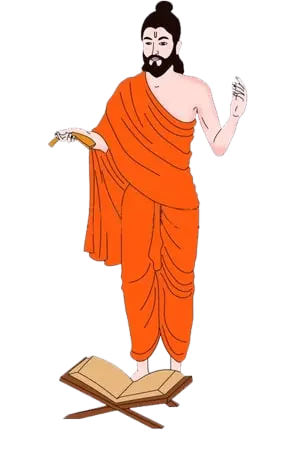Top 7 Famous Temples in Varanasi You Can’t Miss
Famous Temples in Varanasi: Varanasi, also called Kashi or Banaras, the city of Lord Shiva, is believed to achieve liberation.…
 0%
0%

Mumba Devi Temple: Mumbai is India’s financial capital and is also known as Mayanari. There are many places to visit in Mumbai, including the sea and Gateway of India.
There are also many famous religious places in Mumbai where a large number of devotees come every day to visit.
Mumba Devi temple is one of the most visited temples in Mumbai, Maharashtra. The Mumba Devi temple is about 400 years old.

According to religious beliefs, all the wishes of any devotee who comes to the Mumba Devi temple with his unfulfilled wish are fulfilled.
There are many prominent and famous temples of Jagat Janani Maa Durga across the country. One of them is the Mumba Devi Temple, located in Maya Nagari.
Maa Mumba Devi is worshipped in this temple. There is a religious belief that Mother Mumba Devi protects the residents of Maya Nagari Mumbai from the sea.
Today, in this blog, we will explore the amazing facts about the Mumba Devi Temple in Mumbai.
Along with the rich history, we will learn about the Darshan timings of Mumba Devi temple and the ways to reach it. Come, let’s know everything about the Mumba Devi temple–
| Timing | Ritual |
| 5:30 am | Temple opens with Mangal Aarti |
| 6:00 am | Temple open for Darshan |
| 9:30 am | Main Aarti |
| 11:30 am | Naivaidya Aarti |
| 6:30 pm | Dhoop Aarti |
| 8:00 pm | Main Aarti |
| 10:45 pm | Shayan Aarti |
| 11:00 pm | Temple Close |
Darshan for Devotees –
6:00 am to 10:45 pm
Mumba Devi is considered the village goddess of Mumbai, i.e., the Kuldevi (family goddess), and is worshipped in this form.
Mumba Devi temple is also included in the famous temples of Maa Durga. The idols of Maa Jagdamba and Maa Annapurna are installed in the Mumba Devi Temple.
Maa Amba is worshipped every day properly. It is said that Mumbai has become the economic capital of the country only because of the grace of Maa Mumba Devi. The vehicle of Maa Mumba Devi changes every day.
On Monday, Maa rides on Nandi, and on Tuesday, she rides on an elephant. Wednesday, she rides on a rooster, and on Thursday, she rides on Garuda.
On Friday, she rides on a white swan, and on Saturday, she rides on an elephant again. On Sunday, the vehicle of the Goddess is a lion. Aarti of Maa Mumba Devi is performed six times a day.
If historians are to be believed, the Maya city is named Mumbai after the name of Mumba Devi. In the British era, Mumbai was called Bambai or Bombay.
In 1995, the name Bombay was changed to Mumbai. Since then, the beautiful Maya city situated on the seashore is called Mumbai.
It is said that the people of the Koli community used to call Bombay Mumbai since ancient times.
Turning the pages of history reveals that the Mumba Devi temple is 400 years old. This temple was built in the year 1737.
At that time, the people of the Koli community built the Mumba Devi temple in Bori Bunder.
However, the British government shifted the Mumba Devi temple from Bori Bunder to Kalbadevi. The land for the construction of this temple was donated by Pandu Seth.

At that time, the family members of Pandu Seth used to take care of the temple. Years later, a committee was formed as per the instructions of the High Court. At present, the trust committee takes care of the temple.
The fishermen living in Mumbai and its coastal areas are called Kolis. In the year 1737, there was a colony of fishermen in Bori Bunder.
People of the Koli community used to go to the sea to catch fish. After worshipping Mumba Devi, the fishermen used to go to the sea.
There is a religious belief that Maa Mumba Devi protects the fishermen from the sea. Despite adverse conditions in the sea, the fishermen did not suffer any harm.
Overall, Maa Mumba Devi was used to protect the fishermen from the sea. At that time, the people of the Koli community built the temple of Maa Mumba Devi in Bori Bunder.
The temple honours goddess Parvati (also referred to as Maa Gauri) in her fisherwoman shape.
Goddess Parvati required perseverance and concentration to take on the avatar of Mahakali.
Lord Shiva (goddess Parvati’s husband) required her to reincarnate in the form of a fisherwoman at the time so that she might learn perseverance and concentration as a fisherman.
Goddess Parvati later assumed the form of a fisherwoman and built a hermitage in the fishing village (now Mumbai).
Goddess Parvati was called Matsya in her youth, and Mumba was later in her fisherwoman avatar.
Devi Mumba devoted herself to learning perseverance and concentration under the guidance of fishermen who were eager about their trade of catching fish.
After Mumba had perfected the skills of perseverance and concentration, the time had come for her to go back to her former residence.
Lord Shiva was incarnated as a fisherman and wedded Mumba without knowing who she was.
Afterwards, the fishermen requested her to remain there permanently, and she turned into the village goddess (grama devata).
She became Mumba Aai after the locals named her “Aai” (mother in Marathi). Mumbai took its name from her.
The architecture of Mumba Devi Temple in Mumbai is significant. A silver crown, nose stud, and gold necklace surround the goddess’ chief idol.
The idol, ironically, has no mouth. Within the temple, statues of other Hindu deities can be found.
The temple stands in the traditional ancient Hindu style and has a massive spire topped with a red flag that is always flying.
The temple’s exterior features many expertly crafted carvings. Anyone who goes to Mumba Devi Temple will be astonished at its architecture.
The prime feature of the Mumba Devi Temple is the idol of Goddess Mumbadevi, decorated with a silver crown, a gold necklace, and a nose stud.
The idol is kept on an altar and decorated with marigold flowers. Mumba Devi’s idol does not have a mouth, representing Mother Earth.
The idols of ‘Hanuman‘ and ‘Ganesh‘ also form a part of the temple complex. Other statues are a stone idol of ‘Annapurna‘ perched on a peacock and a tiger sculpture of a ferocious one.
Millions of devotees come to this temple annually to celebrate all the festivals that are celebrated here. Some of the prominent festivals celebrated here are:
Durga Puja (Winter) – Devotees here celebrate the goddess Durga’s victory over the buffalo demon (Mahishasura) and celebrate Navaratri in the month of Ashwin (Sep-Oct).
Navaratri (Summer) – They also celebrate other Navaratri during the fortnight of the Chaitra (March-April). They worship Navadurga (Nine Durgas) every nine days.
This site of Mumba Devi Temple is quite heavenly, and you can tour it throughout the year. Still, the optimum time to travel to this temple is in the monsoon and winter seasons.
Throughout the monsoon season, this site experiences medium to heavy rains, and therefore, it seems like heaven with its verdure and sends freshness elsewhere.
In this section, we will discuss the amazing facts about the Mumba Devi Temple in Mumbai:
It is located in Bhuleshwar (Kalba Devi), Mumbai, the capital of Maharashtra. There is a Mumba Devi temple at this place. Devotees can reach the nearest railway station by taking Mumbai’s suburban local train.
Apart from this, you can also reach Mumba Devi temple by bus. You can reach Mumbai from any corner of the country by air and rail.

There is Zaveri Bazaar near Mumba Devi. This market of Mumbai is very famous. So let us know the details below about how to go to Mumbadevi Temple by flight, train, and roadway-
If you have selected a flight to visit the Mumba Devi temple, then let us tell you that Chhatrapati Shivaji International Airport, located in Mumbai, is the country’s main international airport, and flights are available from almost all the airports in India.
Chhatrapati Shivaji International Airport is located at a distance of about 18 kilometres from Mumbadevi temple, so after travelling by flight and landing at the airport, you can easily reach Mumbadevi temple with the help of a taxi, auto, or local vehicles.
For those tourists who want to travel to Mumba Devi temple by train, we should tell them that the nearest railway station to the temple is Chhatrapati Shivaji Terminus railway station, which is the second largest railway station in the world.
This temple is located at a distance of only about 1 km from the railway station, so after getting down at the railway station, you can reach Mumba Devi temple on foot or by taking an auto.
Mumbai has very good road connectivity with all parts of the country. Mumba Devi Temple is located just 2.7 km from Mumbai Bus Stand. Therefore, Mumbadevi Temple can be easily reached by road or bus.
Mumbai is the most famous tourist destination in Maharashtra state, surrounded by many well-known tourist spots, as shown below, along with the Mumba Devi temple.
That’s why if you are planning to go to Mumbadevi temple Mumbai with friends or family members, then free up some time and surely visit the nearby tourist spots from Mumbadevi temple –
Mumba Devi Temple is a famous ancient temple located in the centre of Mumbai. This temple, which is dedicated to Mumba Devi, remains a centre of faith for the people of Mumbai.
At the same time, Mumba Devi is specially worshipped by the Koli fishermen of Mumbai, who consider her their goddess and their protector.
The local people have unwavering faith in Maa Mumba Devi. A large number of devotees visit the temple to worship and have darshan of Maa Mumba Devi.
The religious belief is that no devotee returns empty-handed. The wishes of the devotee are surely fulfilled.
The local people stick a coin on the wall in the centre of the temple and ask for a wish. If the coin sticks, the wish is surely fulfilled.
On the other hand, if the coin does not stick, the wish is not fulfilled. Apart from this, the devotees express their wishes during the darshan.
After the wish is fulfilled, the devotees go to the temple again to have darshan of Maa Mumba.
I hope you enjoyed reading this article. To read more such articles, stay connected with 99Pandit.
If you want to perform puja with the help of a skilled Pandit, you can easily book a Pandit from 99Pandit.

100% FREE CALL TO DECIDE DATE(MUHURAT)

Table Of Content
Filters by categories
All Pujas
Puja On Special Events
Upcoming Pujas
Dosha Nivaran Pujas
Mukti Karmas
Filters by Trending Topics
Filters by Regions
North Indian Pujas
South Indian Pujas